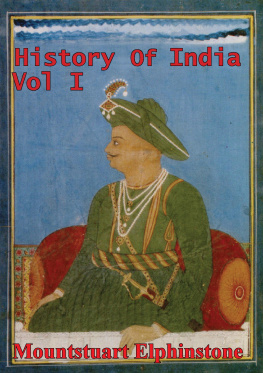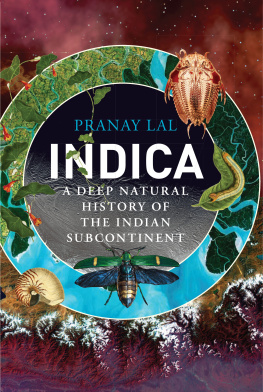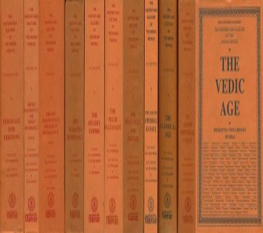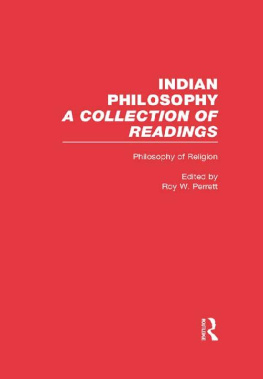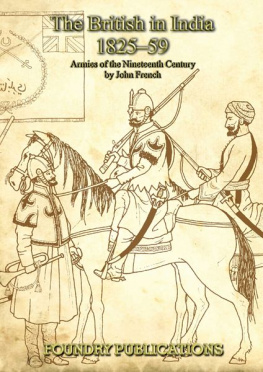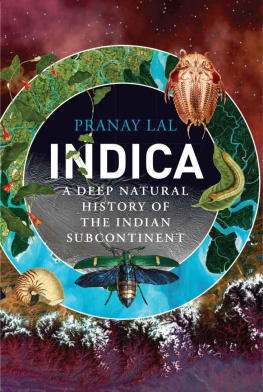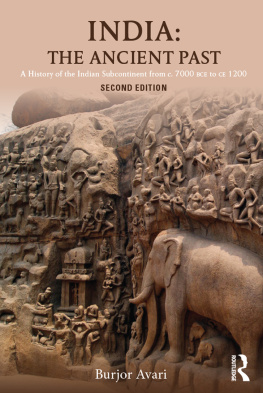

This edition is published by PICKLE PARTNERS PUBLISHINGwww.picklepartnerspublishing.com
To join our mailing list for new titles or for issues with our books picklepublishing@gmail.com
Or on Facebook
Text originally published in 1841 under the same title.
Pickle Partners Publishing 2013, all rights reserved. No part of this publication may be reproduced, stored in a retrieval system or transmitted by any means, electrical, mechanical or otherwise without the written permission of the copyright holder.
Publishers Note
Although in most cases we have retained the Authors original spelling and grammar to authentically reproduce the work of the Author and the original intent of such material, some additional notes and clarifications have been added for the modern readers benefit.
We have also made every effort to include all maps and illustrations of the original edition the limitations of formatting do not allow of including larger maps, we will upload as many of these maps as possible.
The History of India
by the Honourable Mountstuart Elphinstone
In two volumes
Volume I
TABLE OF CONTENTS
Contents
Book 6 Kings of Delhi, to the Accession of the House of Teimur, 12061526
Chapter 1 Slave Kings
1206, Independence of India Kutb u din Progress of a Turki Slave 1210, Aram 1211, Shams u din Altamsh 1217, Conquests of the Moguls under Chengiz Khan 1221, King of Kharizm pursued into India 1223, Returns to Persia State of Hindostan 1236, Health of Altamsh Rukn u din Sultana Rezia Her Virtues Her Weakness Rebellion 1239, The Queen defeated and put to death Moizz u din Behram Mogul Irruption into the Panjab 1241, Ala u din Masaud Mogul Irruptions 1246, Nasir u din Mahmud Gheias u din Bulbun Vizir 1253, Removal of Bulbun Discontents and Intrigues Bulbun restored 1266, Gheias u din Bulbun Bulbun puts down the Influence of the Slaves His Character 1279, Revolt of Bengal Suppressed Mogul Irruption Victory and Death of the Heir Apparent 1286, Death of Bulbun Kei Kobad Intrigues and Power of the Vizir Massacre of Mogul Mercenaries Kings Interview with his Father Murder of the Vizir 1288, The King dethroned and put to death.
Kutb u din Eibak
Independence of India
From the death of Shahab u din, India became an independent kingdom; and after the disturbance occasioned by the dissolution of his empire had subsided, it ceased to have any connection with the countries beyond the Indus.
Progress of a Turki slave
The life of Kutb u din, the founder of this new monarchy, affords a specimen of the history of the Turki slaves, who rose to sovereignty throughout Asia, and who for a long time furnished a succession of rulers to India.
He was brought to Nishapur in his infancy, and purchased by a wealthy person, who had him instructed in Persian and Arabic. On his death, Kutb was sold to a merchant, who presented him to Shahab u din. He soon acquired his masters favour, and was in command of a body of horse, when, in some border warfare with the Kharizmians, he was taken prisoner on an occasion in which his gallantry had been conspicuous. Being afterwards recaptured, he was received with an increase of favour; and by his subsequent good conduct stood so high in his sovereigns estimation, that, after the defeat of the raja of Ajmir, he was left in charge of all the new conquests.
His masters subsequent successes were greatly promoted, as has been shown, by Kutb u dins ability in his new station; and in process of time the conduct of affairs in Hindostan was almost entirely confided to his discretion. A natural manliness of character inherent in the Turks gave to newly raised officers of that nation an estimation among the other great men which seldom falls to the lot of the creatures of princes; and Kutb u din, instead of being an object of jealousy, seems to have been generally beloved for the frankness and generosity of his disposition.
Besides the friendships formed with the great, he strengthened himself by family connections with persons circumstanced like himself. He married the daughter of Eldoz; he gave his sister in marriage to Nasir u din Kubacha; and he afterwards bestowed his daughter on Altamsh, another rising slave, who afterwards succeeded to his throne.
Nasir u din from the first acknowledged his superiority, and held Sind of him, under the supremacy of Mahmud of Ghor; but Eldoz, with whom ambition had more force than family ties, affected to treat India as if it were still a dependency of Ghazni, set out with an army to enforce his claim, and almost immediately gained possession of Lahor. He was soon after driven out by Kutb u din, who followed up his success by the capture of Ghazni.
1205, AH 603
After being some time in possession, he was expelled in his turn by Eldoz, and spent the rest of his life in the government of his own dominions, where he left a permanent reputation as a just and virtuous ruler.
1210, AH 607
He had only been four years on the throne, but his administration had been known for the twenty years that he officiated as the representative of Shahab u din.
Aram
Aram, his son, succeeded him. He showed no capacity, and was dethroned within a twelvemonth by his brother-in-law, Altamsh.
Shams u din Altamsh
1211, AH 607
It is related of Altamsh, probably after his elevation, that he was of a noble family, but was sold, like Joseph, by his envious brothers. Sultan Shahab u din, unwilling to pay the price demanded for him, allowed Kutb u din as a favour to purchase him for 50,000 pieces of silver. He passed through different stations, and was governor of Behar at the time of his revolt. He was invited to the throne by a party; but a numerous body of Turki chiefs were opposed to him, and he did not gain possession without a battle.
Eldoz, in his assumed superiority, gave him investiture unasked; but being soon after driven out of Ghazni by the king of Kharizm, he made an attempt to establish himself in India.
1215, AH 612
He penetrated to Tanesar, and had even made a party in Altamshs court, when he was defeated, was taken prisoner, and ended his days in confinement.
1217, AH 614
Altamsh next marched against his wifes uncle, Nasir u din Kubacha, who had asserted his independence in Sind; but, although he displayed great activity and personal gallantry, he did not succeed in establishing his sovereignty.
At this time it seemed far from improbable that the Kharizmians would pursue their conquests into India, and Nasir u din had already been engaged with bodies of their troops which had approached the Indus.
Conquests of the Moguls under Chengiz Khan
But all these alarms were suspended by an event which changed the whole face of Asia. Chengiz Khan, originally a petty chief among the Moguls, having subdued the three nations of Tartary, and swelled his bands with their united hordes, burst on the Mahometan kingdoms with an army that never was equalled in numbers either before or since.
This irruption of the Moguls was the greatest calamity that has fallen on mankind since the deluge. They had no religion to teach, and no seeds of improvement to sow, nor did they offer an alternative of conversion or tribute; their only object was to slaughter and destroy; and the only trace they left was in the devastation of every country which they visited. The storm first fell on the Sultan of Kharizm, who had drawn it on himself by the murder of Chengizs ambassadors. His armies were defeated, his cities demolished, his country laid waste, and a great part of his subjects either massacred or reduced to slavery. He himself died of a broken heart, in an inaccessible retreat on an island in the Caspian, and his son and successor, Jelal u din, was driven into the eastern extremity of his dominions.
Next page

